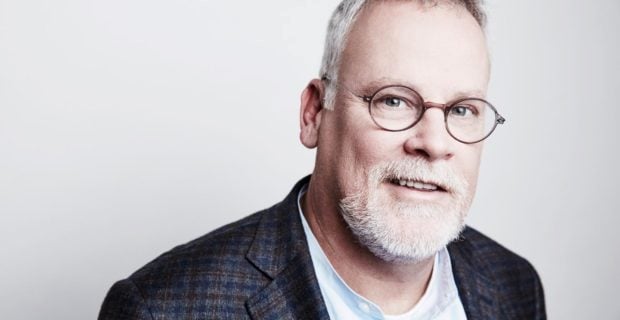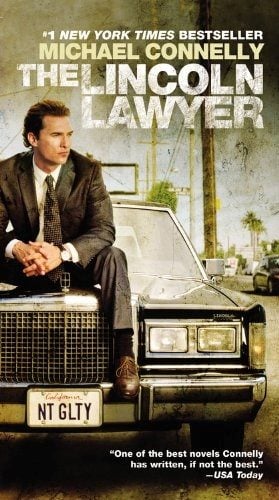The Gist
- Customer needs. Determining what customers want can sometimes feel mysterious.
- Meeting points. Be prepared to engage customers where they are for maximum impact.
- Mystery solved. Conduct a thorough customer needs assessment to unravel organizational challenges.
I live in Southern California, so it’s no surprise I spend a lot of time in my car. My 20-minute commute in the morning turns into anywhere from 50-90 minutes at night.
You’d think I’d use that time to do something productive — learn a new language, listen to podcasts on customer needs, or take work calls — but instead I listen to mystery novels. Specifically, Michael Connelly mystery novels. I believe you can take inspiration from Connelly on how to determine your customer needs.

Even if you haven’t read one of Connelly’s books, you’re probably familiar with his characters — LAPD Detective Hieronymus (Harry) Bosch, the star of the Amazon Studios TV series "Bosch and Bosch": Legacy (second season releasing October 20); Mickey Haller, played by Matthew McConaughey in the movie "The Lincoln Lawyer" and the central character of the new Netflix show "The Lincoln Lawyer"; or FBI Agent Terry McCaleb, played by Clint Eastwood in the movie "Blood Work."

If you’re not familiar with Connelly’s characters, the important thing to know is that Connelly writes extensively about the judicial system in Los Angeles, and Los Angeles is as much of a character in his books as Harry Bosch or Mickey Haller. Whether Connelly is writing about the LAPD, prosecutors or defense attorneys, FBI agents, or even a reporter, there’s a compelling mystery, moral complexity and gritty realism.
Even better, his books are perfect for commuting — great rhythm, fantastic pacing and characters who are usually also stuck in traffic because, as they say, misery loves company. The only problem is there are only 37 books, and I only have one left to go. (Editor’s note: Please leave any recommendations for mystery series you loved on my social media.)
While I was on the 405 the night before writing this column, stuck in one spot for 10 minutes, I was listening to the end of the Jack McAvoy novel "Fair Warning." Despite the twisty plot centered around the lax regulation of DNA testing and the rather heart-pounding ending that involves a shootout in standstill traffic on the 101 freeway, my mind started wandering and I started thinking that while Michael Connelly writes mysteries, in all his books, there’s a real undercurrent of lessons about how we can approach customer experience.
Let's take a look at how to determine your own customer needs inspired by his books.
Related Article: Social Listening: Key to Understanding Customer Needs and Preferences
Here Are Some Tips on What to Consider for Achieving Customer Needs
1. Be Obsessed With Solving for Customer Needs
Bosch is known for one thing — his single-minded obsession with solving cases, regardless of the victim. In his words, “Everyone counts, or no one counts.”
We can have the same single-minded focus on customers. In fact, while 60 percent of companies surveyed in Zendesk’s CX Trends Report gave themselves high marks for service, 68 percent of customers say there’s room for improvement. In fact, 54 percent of customers report that customer service feels like an afterthought for most of the businesses they buy from.
Customer-focused businesses are driven by relationships, rather than by profits. As I’ve said in the past, my former CEO Nien-Ling Wacker used to say that when you make decisions with customers in mind, the money will follow. Customers like to build relationships with people — and companies — they like and trust. It’s easy for customers to sense when they don’t matter to a company, and that’s when they start to look elsewhere.
The good news is that customer needs focus can be improved. “Making the customer feel heard is a huge part of customer focus,” says Jonathan Brummel, Senior Manager, Premier Support at Zendesk. “And when they don’t feel heard, that’s when the experience can quickly go south.”
But you can’t hear your customers if you aren’t listening. Be sure you’re giving customers an opportunity to share their insights and feedback — and that you’re doing your best to act on that feedback. Because when it comes to customers, everyone counts.
Related Article: 5 Tips for Improving Personalized Customer Experience
2. Meet Your Customers Where They Are
Mickey Haller, the eponymous Lincoln Lawyer, is known for working out of the back of his Lincoln Navigator as he takes on cases in Los Angeles, driving to meet his clients by the side of the road, at motorcycle clubs, or in one of the many courtrooms across the greater Los Angeles area. He also advertises where he knows his potential clients are looking for a lawyer: the back of the phone book (in earlier novels), park benches and billboards.
Like Mickey, we can meet our customers where they are. If we’re investing in our customer journey to optimize the best communication points within our product experience, we can maximize feedback and minimize disruption.
Think about experiences you enjoy. Maybe it’s Amazon — you add something to your shopping cart using Alexa, add something different in the app on your phone, purchase a book through your Kindle, and ultimately check out your cart on your laptop. Perhaps you get a notification on your phone reminding you an author whose books you’ve purchased in the past has a new book you might enjoy. Or Alexa reminds you that you might be running low on paper towels. All these interactions pull from massive datasets to simplify and personalize your interactions. It seems seamless to you and meets customer needs — which is the goal.
As customers research and buy online — many from mobile devices — website, chat, text and even in-app communications become even more important. If you’re not ready to meet customers where they are, whether that’s on their phone or physically in your office, you’re sacrificing engagement. Knowing your customer needs can help you better prepare for these varied communication channels.

Omnichannel Is Where It's At
Ultimately, meeting customers where they and providing omnichannel customer experience are means personalizing every interaction when it happens. It could be Mickey Haller pulling up in his Lincoln or it could be your support team providing in-app support via live chat. Whatever it means to you, it requires knowing your customer and being confident in your approach.
Related Article: What Defines World-Class Customer Service Now and How to Get There
3. Use Your Team to Improve Customer Needs
Harry Bosch, while cast as a lone wolf fighting the system, also knows when to bring in the experts. While he knows a lot — and isn’t afraid to tell his colleagues that he does — he also understands his limitations. The Bosch novels feature a rotating cast of coroners, forensic accountants, cold case detectives, FBI agents and other experts who help Harry find information and catch the bad guy.
Like Harry discovers about solving crimes, when it comes to customer experience, it’s all about working cross-functionally. What's stopping companies from truly understanding the digital behaviors of their customers? A Forrester study identified organizational silos as the top obstacle preventing better customer experience.
It can be hard to break down silos. Like Harry, we all think we know best. But whether it’s conducting an autopsy or integrating cross-departmental systems, we all have to know our limits. So if you’re looking to break down silos and get your teams working better together, try making sure your UX, product management, IT, ecommerce, marketing, customer support, customer success and development teams are all using the same customer data. Utilizing customer satisfaction data can be a crucial first step in breaking down these organizational barriers.
Seems like a mystery you can’t solve? Well, it did take Harry Bosch about 11 books to solve his mother’s murder. All good things take time.
4. Change With the Times
Reporter Jack McAvoy, the protagonist of "The Poet," "The Scarecrow" and "Fair Warning," spans a large portion of Connelly’s writing career, with the first book written in 1996 and the last written in 2020. In the first book, Jack is writing for the Rocky Mountain News, and by the last book, he’s hosting a podcast. On the same token, Bosch starts out in 1992’s "The Black Echo" with a pager, looking for pay phones to return calls, and by the later books he’s using a smartphone, no matter how grudgingly.
Customer experience has evolved significantly just in the last 10 years. Ten years ago, it was all about automation, but generic replies left customers cold. Ten years ago, most companies still did business by phone and email. Now we have Instagram shopping, Google ads, video calls and communication we never considered previously.
Just consider Salesforce’s 2020 State of the Connected Customer Research:
- 76% of customers expect consistent interactions across departments, yet 54% say it generally feels like sales, service and marketing teams don’t share information.
- 74% of customers have used multiple channels to start and complete a transaction.
- 66% of customers expect companies to understand their unique needs and expectations, yet 66% say they’re generally treated like numbers.
Like Harry Bosch with his pager, we know things are not going to stay the same — and we must change like your customers change. Customer needs are always changing. Whether that’s investing in new technology or understanding omnichannel customer journey, you can’t stay stagnant while the world changes around you.
Customer Needs Doesn't Have to Be a Mystery
Unlike the world of Michael Connelly’s characters, customer experience doesn’t have to be a mystery. It really just takes focus and dedication to solve your customers’ needs. Understand what will satisfy your customers, be prepared to change course, work with the experts, and, above all, care about the people you’re serving, and you’ll be ready for your cameo role in a Connelly novel in no time.
Learn how you can join our contributor community.
